You’ll find that creating the perfect living room isn’t just about choosing beautiful furniture – it’s about understanding the science of space and flow. Whether you’re working with a cozy 200-square-foot area or a sprawling 400-square-foot space, specific dimensions and measurements can alter your room from cramped to comfortable. Let’s investigate how the right proportions, clearances, and furniture placement can help you design a living space that feels both welcoming and functional.
Understanding Standard Living Room Measurements
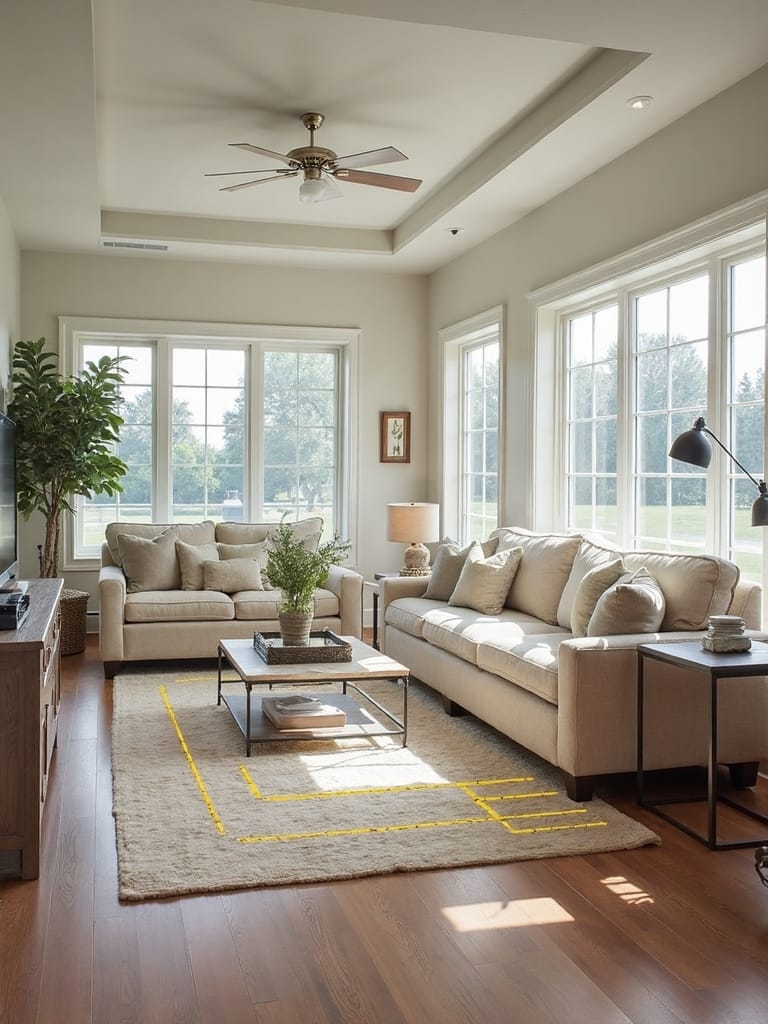
When planning your living space, understanding standard living room dimensions helps you make informed decisions about furniture placement and room functionality.
The typical living area size differs markedly by location. While the average U.S. room spans 300-400 square feet, you’ll find NYC spaces are more compact at 200-300 square feet, affecting your seating capacity and furniture options.
Consider that smaller spaces accommodate 2-4 people comfortably.
Essential Space Planning Guidelines
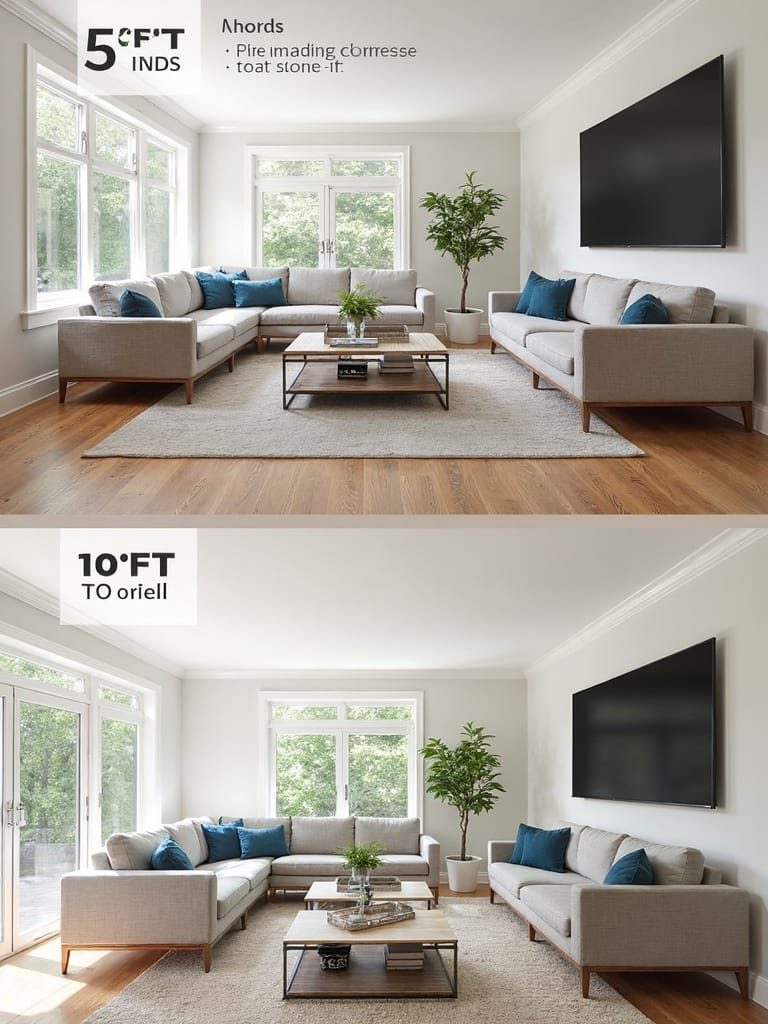
As you begin planning your living room layout, following essential space guidelines will help you create a comfortable and functional environment. Consider your living room size when arranging furniture to maintain proper traffic flow.
Position seating to maximize natural light, and plan multi-purpose functionality zones that respect standard dimensions. You’ll want clear pathways between furniture pieces while ensuring conversation areas remain intimate.
Optimal Furniture Placement and Clearances
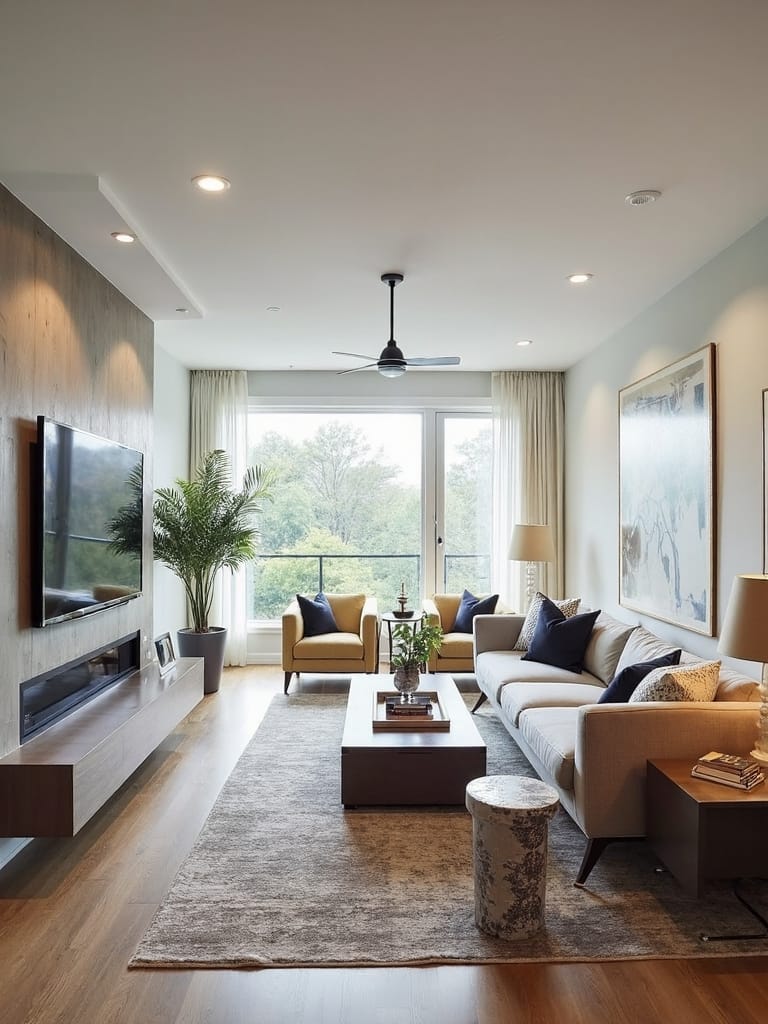
Proper clearances and furniture placement serve as the foundation for a well-designed living room that flows naturally. You’ll want to allow 30-36 inches of walkway space between large furniture pieces, while keeping seating arrangements 3.5 to 10 inches apart.
Position your coffee table 16-18 inches from the sofa, ensuring it’s at least half the sofa’s length.
Traffic Flow Requirements for Different Room Sizes
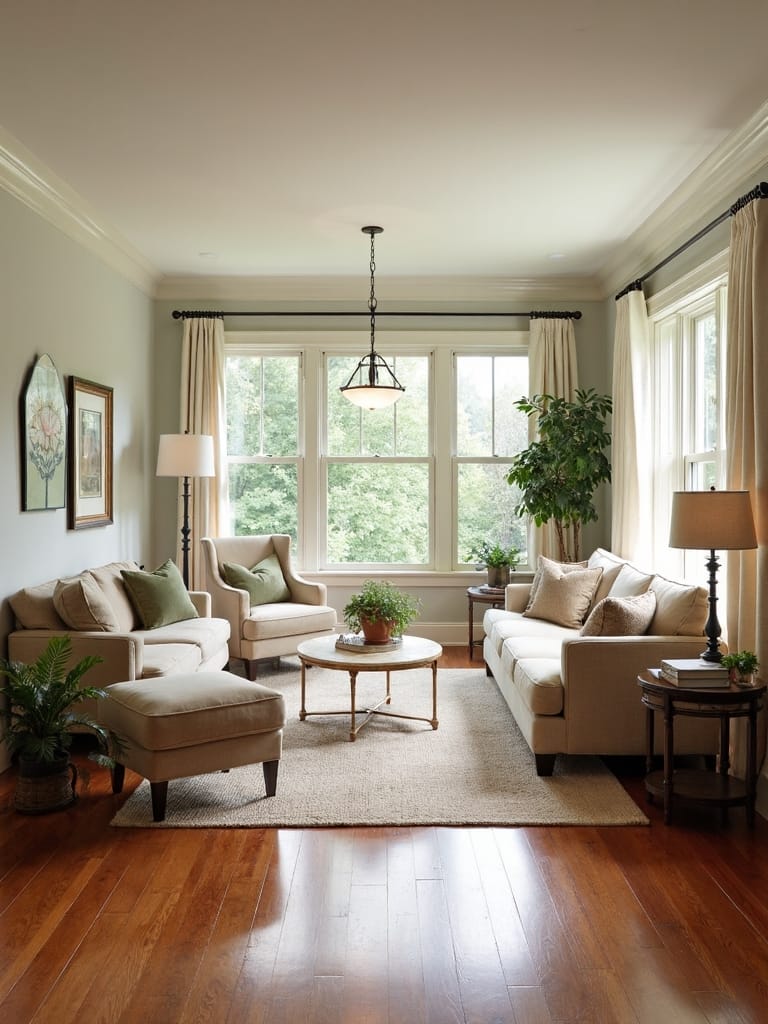
Traffic patterns in your living room directly impact how conveniently you’ll traverse the space during daily activities and social gatherings.
When planning furniture arrangements, you’ll need different clearance based on room size: small rooms require 18-24 inches, medium rooms need 30-36 inches, and large rooms can accommodate up to 48 inches of traffic flow space between pieces.
Small Living Room Layout Solutions (Under 200 Sq Ft)
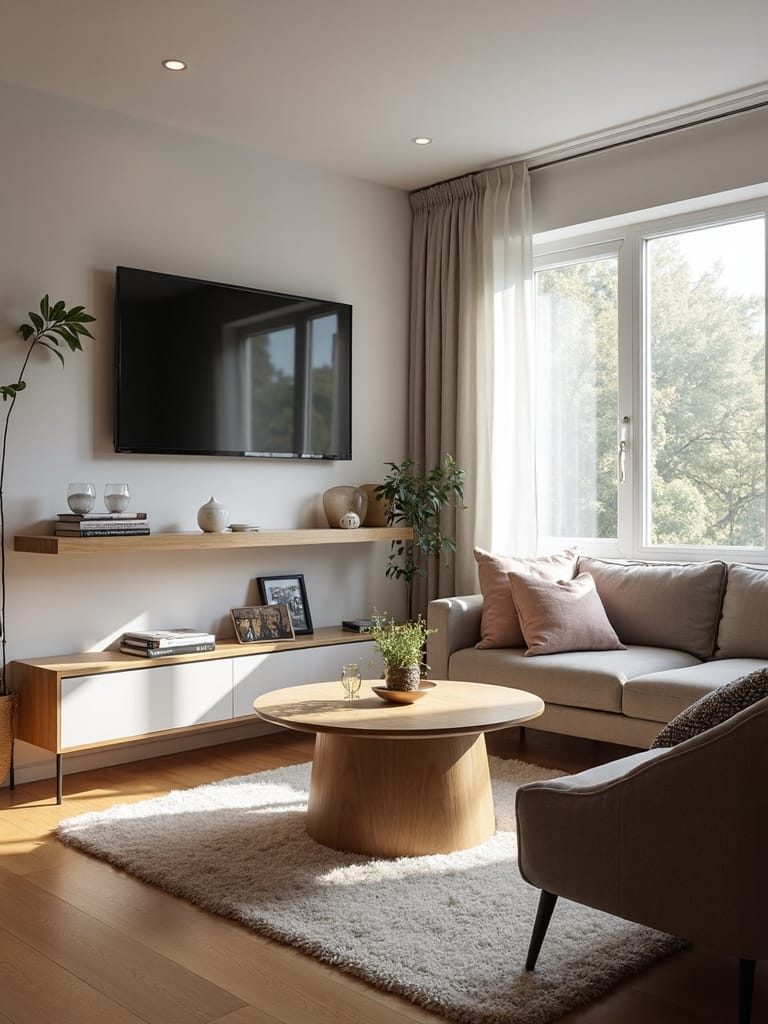
Managing a small living room under 200 square feet calls for smart space-planning strategies that maximize every inch.
Create different seating areas with a compact loveseat and storage units arranged in L-shaped configurations without overcrowding walkways.
You’ll make the space feel larger by installing wall-mounted shelves and strategically placing mirrors.
Multi-functional furniture, like storage ottomans, helps optimize your limited floor space.
Medium Living Room Design Principles (200-300 Sq Ft)
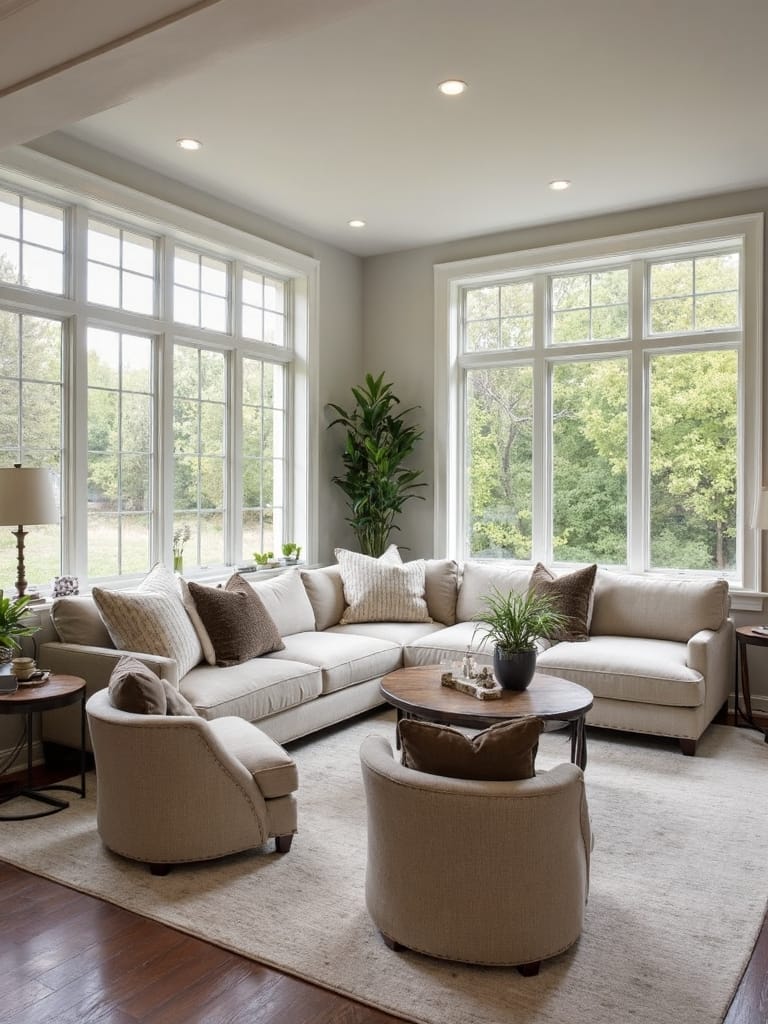
When designing a medium-sized living room between 200-300 square feet, you’ll uncover considerably more flexibility for creating distinct functional zones.
The size of a living space this generous allows you to arrange larger furniture pieces while maintaining good flow.
You’ll have enough space to create a warm atmosphere using area rugs, strategic lighting, and vertical storage solutions that maximize your room’s potential.
Large Living Room Zoning Strategies (300+ Sq Ft)
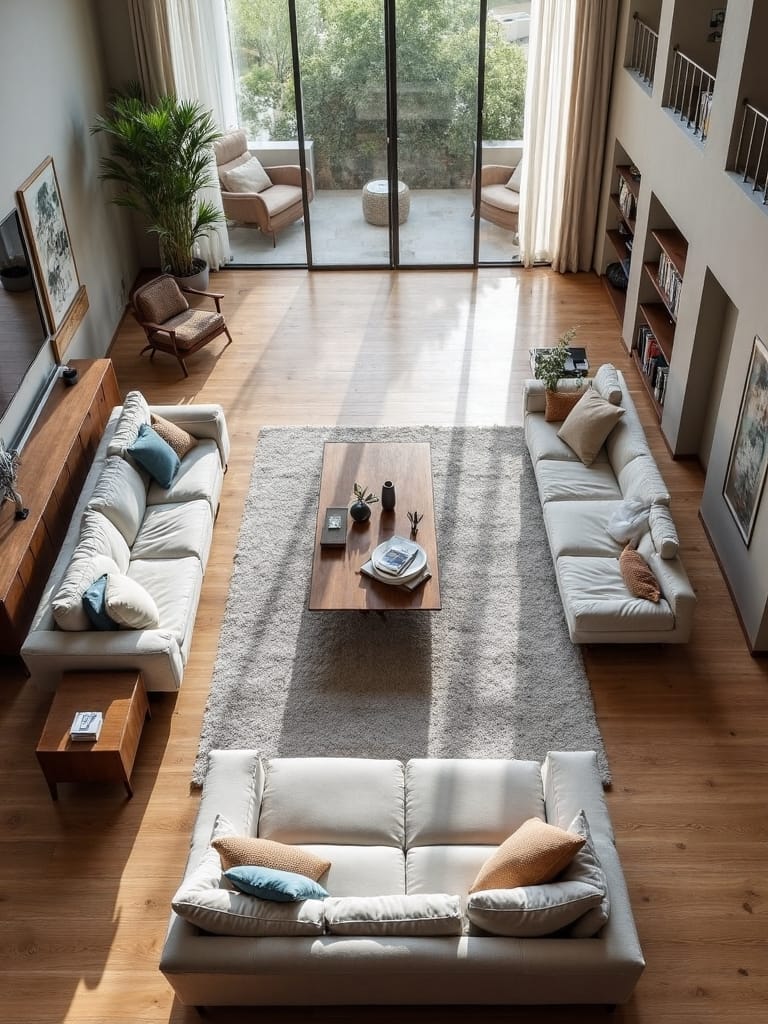
Large living rooms spanning over 300 square feet open up endless possibilities for creating distinct functional zones that flow seamlessly together.
In open floor plans, expert advice suggests dividing your space into conversation, entertainment, and dining areas. Make sure you’re creating a balanced living room feel by using area rugs and strategic furniture to highlight each zone.
Tall bookcases and room dividers can provide natural separation.
Room Shape Considerations and Adaptations
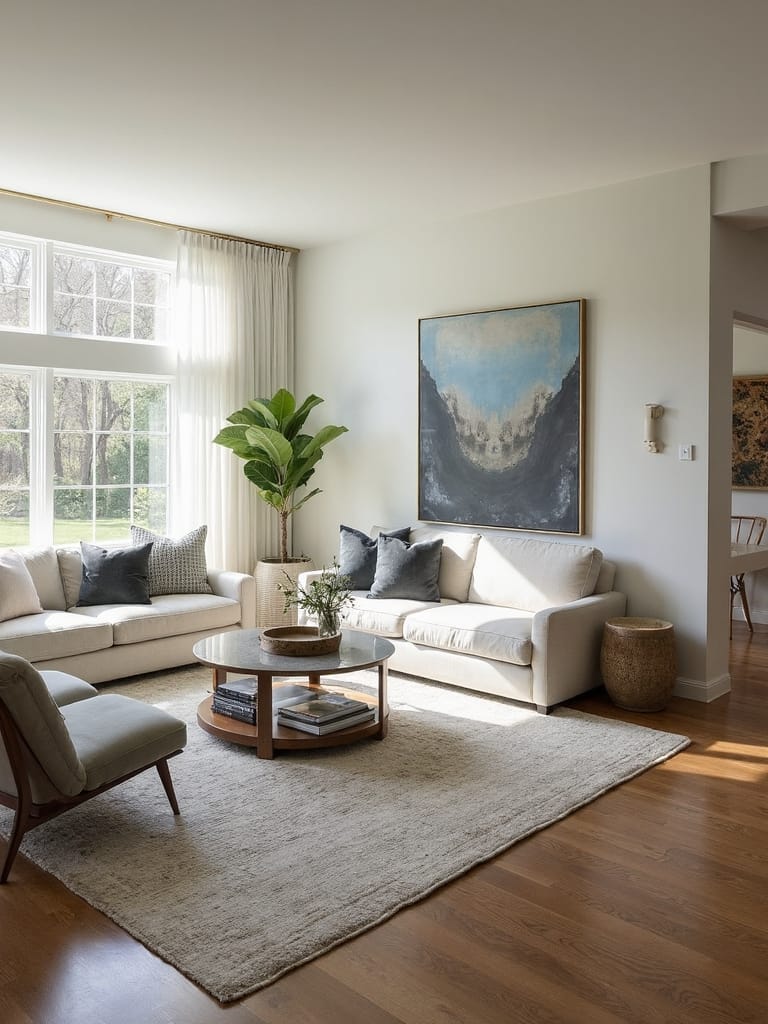
Different living room shapes present unique opportunities and challenges when arranging your furniture and creating a cohesive space. Whether you’re working with a rectangular family room or an L-shaped living space, your interior design approach should adapt accordingly.
Consider consulting design guides for your specific size living room, as each shape requires distinct furniture arrangements to maximize flow and functionality.
Multi-functional Space Planning Tips
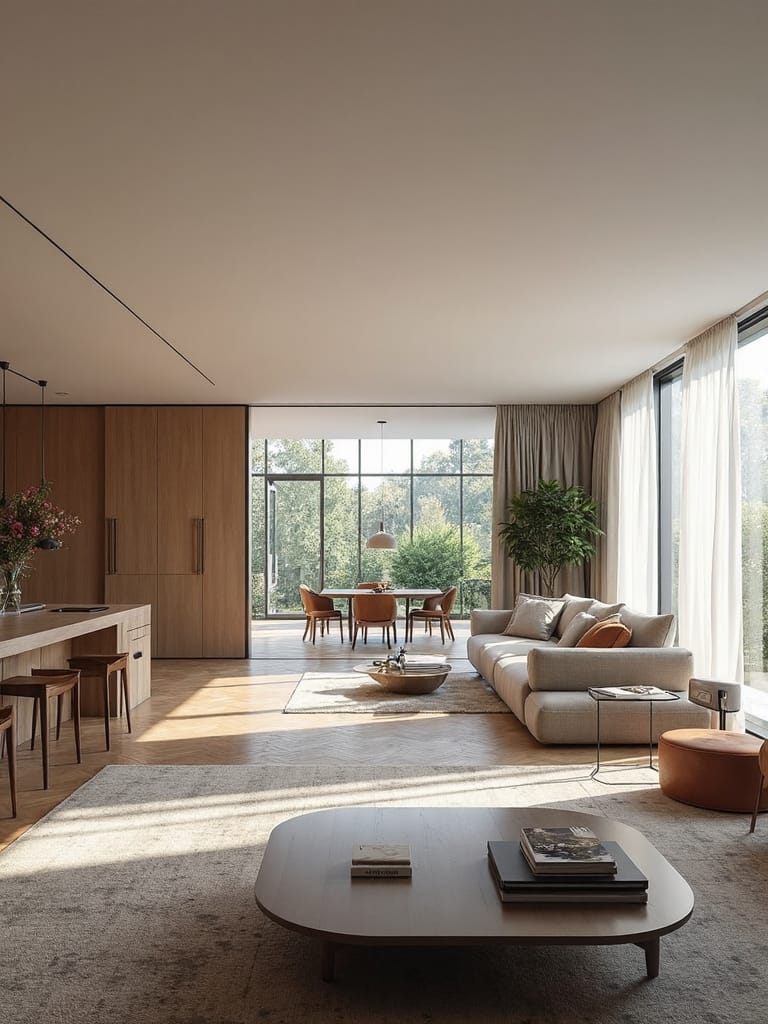
Creating a multi-functional living room starts with smart space planning that adapts to your family’s diverse needs throughout the day. Choose design choices that maximize flexibility, like coffee tables and side tables with storage compartments.
In larger rooms, verify your furniture is proportionate while creating distinct zones for work, entertainment, and relaxation. Consider multitasking pieces that can metamorphose your space as activities change.
Measuring and Scale Guidelines for Success
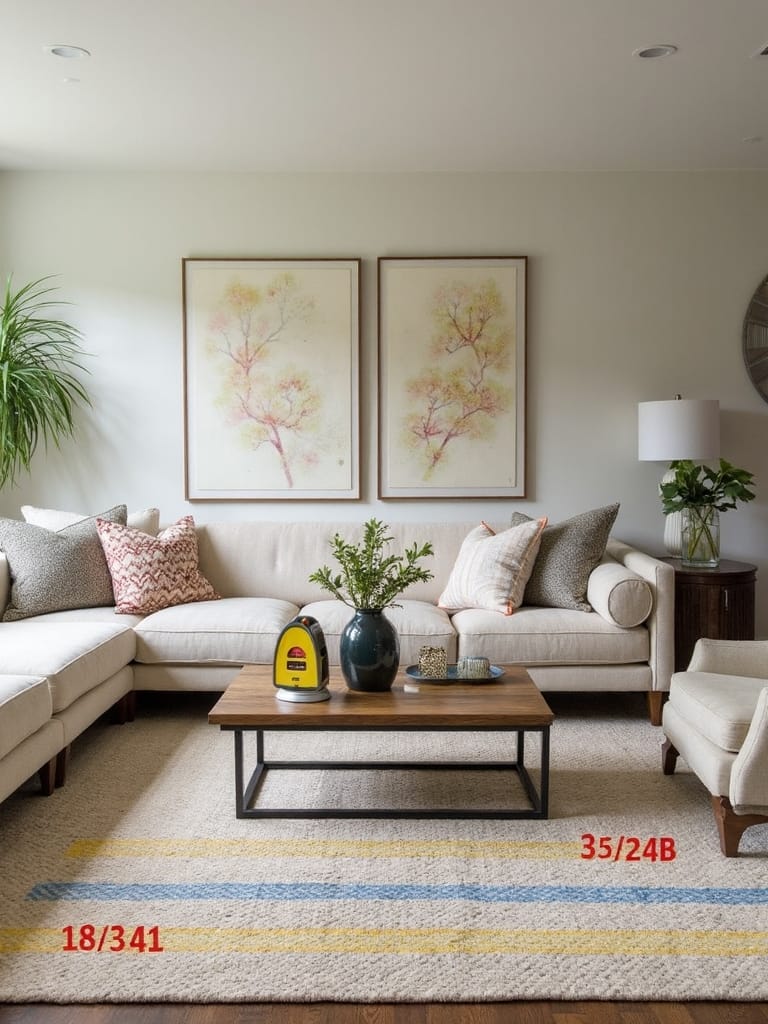
Successfully measuring your living room forms the foundation for a well-designed space that meets your family’s needs. Start by measuring standard living room sizes, including length, width, and height, to determine if you’re working with a large living room of 400 sq ft or a cozier space.
Consider traffic flow around your coffee table and consult an interior designer to optimize your overall layout.
Conclusion
You’ve now got the essential tools to create a living room that works perfectly for your space and lifestyle. Whether you’re dealing with a cozy 200-square-foot area or a spacious 400-square-foot room, remember to prioritize traffic flow, maintain proper clearances, and arrange furniture to maximize both comfort and function. By applying these dimension guidelines and layout principles, you’ll convert, alter, or revamp your living room into a well-balanced, inviting space.

